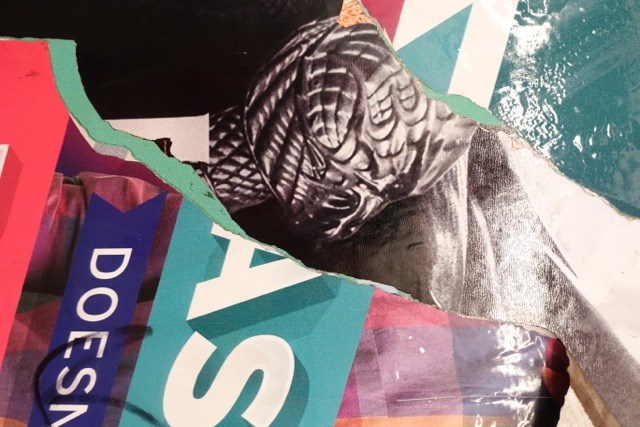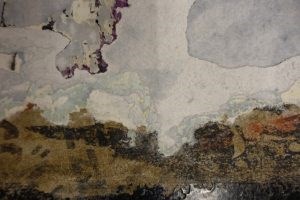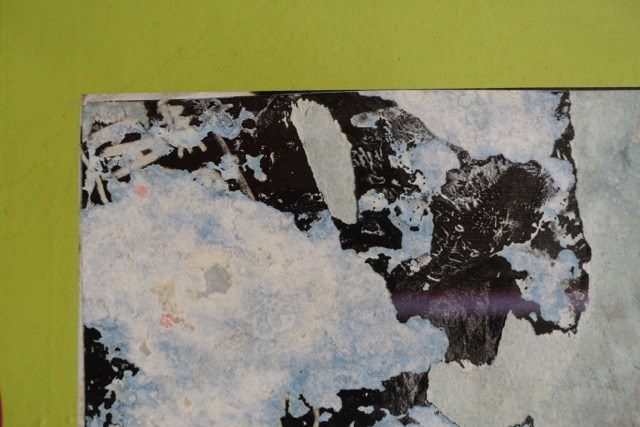
"The Art of Seeing" by Michael Milton
I love decay. Venetian style decay. Parthenon style decay. Even Havanna style decay.
I'm not particularly into the kind of dissolution represented by, say, a 5-day-old dead body left to mortify in the hot sun, though there are Buddhist sects who encourage their followers to meditate on this very scenario. For some religions, life is simply messy birth and a messier still death, bookended by chapters of suffering and decline, punctuated by a few fleeting moments of 'whoopee!' Oh, and if you happen to BE Buddhist, then there's the promise of returning for your next life as a crow or a beetle.

To be clear, the kind of decay I have always enjoyed is more architectural than mortal; time teaming with weather, both working their magic on granite and marble; water and wind undermining hundreds of years of plaster and paint which, when scraped back a bit, reveal layers of colors and textures; or seeing the gradual loosening up of wall paper which, as it pulls away, exposes anything from 2010 bamboo chic to 1940 Dorothy Draper tea rose floral in the blink of an eye.
There is a sort of beauty and mystery in the imperfection of decay. Wabi sabi, a Japanese traditional art form, encourages us to find beauty in the defective. A 16th century tale tells of a young Japanese man who tended a garden and he raked and raked until all was perfect, at which point his master entered and shook a tree, bringing down a few twigs and leaves.

Wabi sabi can be viewed all over Brooklyn. Some of my favorite examples recently arrived in the shape of four photographs. Photographer (and Gong Master) Sotero Bernal asked me whether or not I recognized them. I assumed they were paintings; one struck me as a skillful David Hockney knock off, another made me think of Charles Demuth's wonderful 'Number 5' and the others put me in mind of post war Asian water colors. I was already hoping they would be inexpensive and imagining them in slick frames decorating the walls of my apartment.
Nature, as it works out, was the artist, and the price was just a glance. They were examples of the crumbling of stucco or the loosening of posters in various subway stations throughout Brooklyn. Decay everywhere, a never ending process, a constant reminder of breakdown which also (luckily) hints of regeneration, too (this is not an out for you, MTA!)

There is art in the thick rooted power of the earth in Cobble Hill heaving up and breaking apart sidewalks, in tumble down fences in BedSty covered in morning glories, in chipping painted brick on brownstone walls in Park Slope, in decomposing sandstone carvings over doors in Brooklyn Heights brownstones, all reminding us that we, and everything else on the planet, are itemized under 'dust to dust.' 'Weathering' is as true to marble as it is to our own bodies. And I believe these sobering reminders of our limited sojourn on this earthly plane always brings special poignancy to art.
To understand wabi sabi, to embrace it, also perhaps allows us to embrace ourselves. Finding the beauty in the rusty drain spout might allow us to also find the beauty in the liver spot, the wrinkle, the stain, the frayed dress or the slightly town curtain.
I bought fresh flowers recently and filled my favorite vase and then simply allowed the blooms to run their course. Finally, the once supple, rich colored blossoms dropped and were gathered at the base of the glass, discolored and puckering.

It's a difficult lesson. I buy flowers to be reminded of spring even though winter is always lurking in the wings. And perhaps it's not a bad idea to be reminded once in a while of our own drooping imperfections.
In a world of delusion, it helps keep us real.



